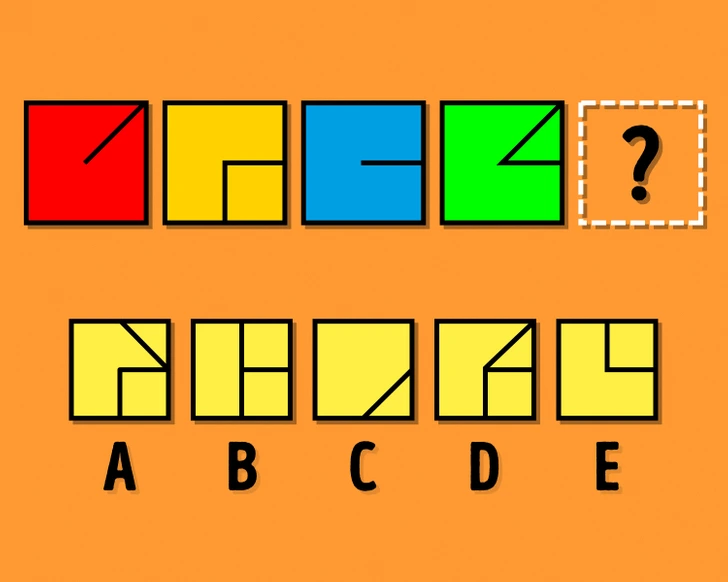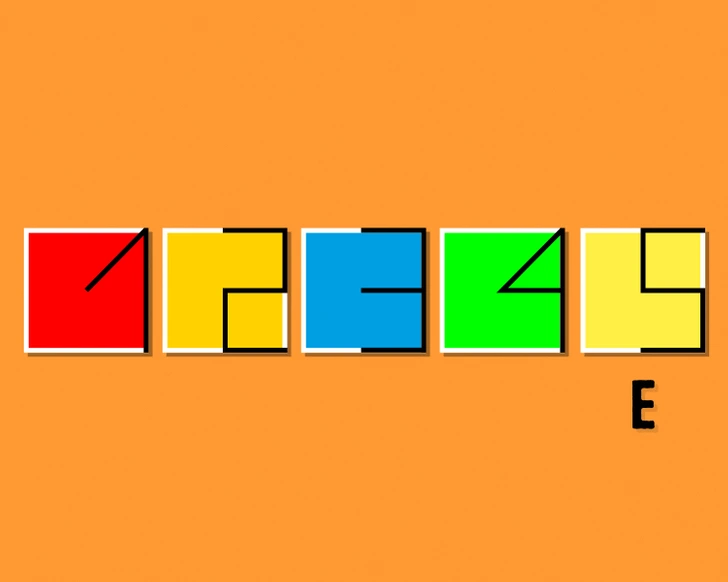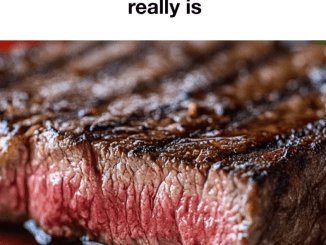Puzzles are a fantastic way to challenge your mind and enhance problem-solving skills. Today’s puzzle is a visual brain teaser that asks: Which square should replace the question mark? At first glance, it may appear simple, but don’t be fooled—solving it requires careful analysis and attention to detail. Ready to test your brain? Let’s dive into the puzzle and break it down step by step.

Understanding the Puzzle: Look Beyond the Colors
When tackling puzzles like this, many people initially focus on obvious aspects, such as the colors of the squares. However, the real clue lies in the patterns formed by lines and shapes inside the squares, not just their color schemes. A common mistake is rushing to an answer without thoroughly analyzing each square. To solve this puzzle, it’s essential to focus on the evolving structure within the squares, rather than just the surface-level colors.
Let’s begin by examining each square in the sequence.
Analyzing the First Square (Red)
The red square contains a diagonal line that divides the square into two equal parts. This is a simple, clean design that introduces a pattern of division. The diagonal line is the key feature here, providing symmetry and balance to the square.
Breaking Down the Second Square (Yellow)
The yellow square changes things up by introducing a smaller square placed in one of the corners. Unlike the first square, which uses a diagonal line, the yellow square focuses on emphasizing corners and geometric structure. The shift from diagonal lines to corner-based designs marks the first evolution in the pattern.
Third Square (Blue): Introducing Horizontal Division
The blue square introduces yet another variation—this time, a horizontal line runs across the center of the square, splitting it into two halves. This new approach brings a different form of symmetry, as the horizontal division offers a change from the previous diagonal and corner-focused designs.
Fourth Square (Green): Combining Diagonals and Sections
The green square takes elements from the previous designs and introduces a diagonal line, similar to the red square, but with an extra section on one side. This creates a more complex design, blending diagonal symmetry with additional segmentation.
Finding the Pattern: What Should Come Next?
At this point, the puzzle challenges you to identify which square should come next in the sequence. The key to solving it lies in recognizing the gradual progression of shapes and line placement. Each square builds upon the last, alternating between diagonal lines, corner sections, and horizontal divisions. The sequence introduces new elements with each step while maintaining consistency in the use of lines and segments.
Solving the Puzzle: The Correct Answer is E
After analyzing all the squares and options, it becomes clear that the answer is Square E. This option fits perfectly into the evolving pattern. Why? Because Square E features a combination of diagonal lines and additional sections, much like the green square before it, but introduces its own unique variation that continues the sequence.
Square E completes the progression by incorporating elements from earlier designs. It balances the use of lines and sections in a way that mirrors the transformation seen across the previous squares. Its design integrates the complexity of the green square with a fresh twist, making it the perfect choice to replace the question mark.

Conclusion: Did You Find the Same Answer?
Did you arrive at the same conclusion? If so, congratulations—you’ve successfully analyzed the puzzle and found the right solution! If not, don’t worry—puzzles like these are designed to challenge your thinking and sharpen your problem-solving skills.
Let us know how you approached the puzzle in the comments! Did you focus on the colors or the shapes? What led you to your conclusion? We love hearing different perspectives on how people tackle these types of challenges.
Keep Solving, Keep Sharpening Your Mind
If you enjoyed solving this brain teaser, you’re in for more fun! Puzzles like this help develop logical thinking, pattern recognition, and problem-solving skills. The more you practice, the sharper your mind will become at spotting patterns and solving even the trickiest challenges.
Ready for the next puzzle? Stay tuned for more brain teasers and visual challenges that will keep your mind sharp and your logic skills in top form! Let’s continue exploring new puzzles together and push the boundaries of our thinking abilities.


